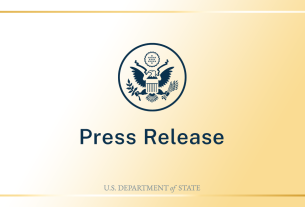China’s lending to Africa has undergone a dramatic transformation in recent years, with commitments plunging from an estimated $28.4 billion in 2016 to under $1 billion by 2022. This decrease in financial support raises questions about the evolving nature of China-Africa relations, historically marked by rapid economic growth and collaboration. As Africa’s largest trading partner and top lender, China’s pivot could have profound geopolitical and economic consequences for the continent.
The Rise of China-Africa Economic Ties
China’s engagement with Africa accelerated after the launch of the Belt and Road Initiative (BRI) in 2013, positioning Africa as a key player in facilitating trade between China, Europe, and the Middle East. China’s investments surged, particularly in large-scale infrastructure projects, with Africa’s vast natural resources becoming a focal point for Chinese financing. By 2022, China had extended over $170 billion in loans, grants, and credits to African nations, funding projects in sectors such as transportation, energy, and mining.
However, the past few years have seen a dramatic decline in Chinese lending. By 2021 and 2022, annual lending commitments fell to around $1 billion, a sharp drop from peak levels. Several factors contributed to this shift, including the unsatisfactory returns on some of the high-cost infrastructure projects, such as Kenya’s Standard Gauge Railway, which has struggled financially despite its strategic importance.
China’s New Lending Policy: “Small is Beautiful”
In 2023, President Xi Jinping introduced a new approach to the Belt and Road Initiative, moving away from large infrastructure projects in favor of smaller, more sustainable loans, typically under $50 million. This “small is beautiful” model aims to mitigate financial risks and create immediate, localized benefits by funding projects such as water supply systems and renewable energy installations. While this shift provides more manageable projects for China, critics argue it may deprioritize Africa’s significant need for large-scale infrastructure, which is essential for long-term economic growth.
For example, Zambia’s challenges in securing Chinese loans for key hydropower projects highlight the difficulties African nations face in obtaining funding for critical infrastructure. As China narrows its focus to smaller projects, the financing gap for large-scale ventures will likely widen, delaying or even stalling vital initiatives.
China’s Continued Focus on Africa’s Mining Sector
Despite the scaling back of lending, China’s interest in Africa’s mining sector remains strong. Chinese companies have invested billions in Africa’s mineral resources, particularly in lithium, cobalt, and other materials vital for green technologies. By 2025, China is expected to control a significant portion of the world’s lithium mining capacity.
However, the benefits of these investments are under scrutiny. Mining operations often lead to environmental damage, such as soil erosion and pollution, and labor abuses, including child labor and unsafe working conditions. The Democratic Republic of the Congo, one of Africa’s largest recipients of Chinese mining investments, remains one of the world’s poorest countries, raising questions about whether these investments are truly driving sustainable economic growth.
Trade Imbalances and Economic Dependence
While China and Africa’s trade volume has reached impressive heights, the trade relationship reveals a growing imbalance. In 2023, China’s exports to Africa totaled $173 billion, while imports from Africa fell to $109 billion, widening the trade deficit to $64 billion. The trade structure, which heavily favors Chinese exports of manufactured goods over African raw materials, limits the economic diversification and industrialization of African economies. Moreover, China’s decreasing reliance on African oil, sourcing more from the Gulf Cooperation Council, signals a shift in trade dynamics.
Geopolitical Ramifications
As China’s presence in Africa grows, questions about geopolitical influence and debt dependency have surfaced. Critics argue that China’s lending practices have trapped African nations in debt, compelling them to align with Chinese geopolitical interests. The construction of China’s first overseas military base in Djibouti in 2017, though framed as a logistical facility, underscores China’s increasing military footprint in Africa.
Despite these concerns, supporters of China-Africa relations contend that China’s approach differs from traditional Western models, offering financing without political interference in African countries’ internal affairs. Moreover, the economic hardships caused by the COVID-19 pandemic, global inflation, and the war in Ukraine have exacerbated Africa’s debt crisis, making it unfair to attribute the continent’s challenges solely to Chinese loans.
Conclusion: A Shifting Dynamic
The future of China-Africa relations is uncertain as both sides navigate new financial realities. While China’s new lending approach prioritizes smaller, more sustainable projects, it risks leaving critical infrastructure needs unmet. As African nations seek alternatives to fill this financing gap, they will have to balance short-term gains with long-term economic strategies. The evolving relationship, characterized by both opportunities and challenges, will require careful management to ensure that China’s investments contribute to Africa’s sustainable growth and avoid deepening dependency.
Source: Vanessa Chen, The Harvard Political Review (2023). Link to full article
Image by brgfx on Freepik



